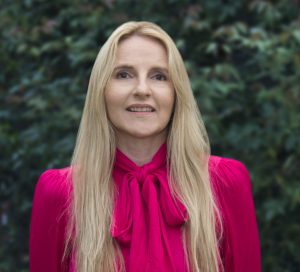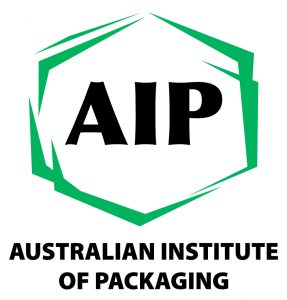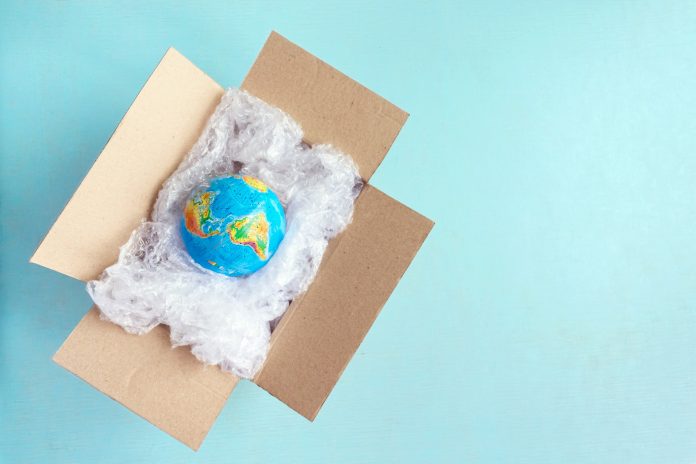
As natural resources rapidly diminish, pollution and greenhouse gas emissions worsen, oceans and waterways fill up with packaging waste, and integral ecosystems become irreparably damaged, the world has been put on notice that the time for talk is over.
By Australian Institute of Packaging Executive Director Nerida Kelton.
It’s time to take bold moves and rethink every aspect of how packaging is designed and used, ultimately providing long-lasting environmental value.
The demand for change is from consumers who want to see circular packaging that has designed out waste, is reusable, incorporates recycled content, and is truly recyclable, with all unnecessary packaging and problematic materials eliminated.
This significant societal behavioural shift is a green light for packaging technologists and designers to become even more innovative and creative through redesigning packaging to be circular and not follow the linear model of ‘take, make, dispose’. Packaging technologists and designers can now design out waste at the beginning, ensuring the materials selected can be used repeatedly and are recyclable, helping to regenerate natural systems.
A great place for packaging technologists and designers to start is by implementing the Sustainable Packaging Guidelines (SPGs) into their design processes.
The SPGs are a central part of the co-regulatory framework established by the National Environment Protection (Used Packaging Materials) Measure 2011 (NEPM) and the Australian Packaging Covenant. The NEPM and the Covenant state that the SPGs are to assist the design and manufacture of packaging that meets the sometimes conflicting demands of the market, consumer protection and the environment.
The 10 Sustainable Packaging Principles that make up the SPGs are:
- Design for recovery.
- Optimise material efficiency.
- Design to reduce product waste.
- Eliminate hazardous materials.
- Use recycled materials.
- Use renewable materials.
- Design to minimise litter.
- Design for transport efficiency.
- Design for accessibility.
- Provide consumer information on sustainability.
The goal of the SPGs is to integrate the principles into the appropriate business areas, to achieve the optimal outcomes for packaging functionality, and to collectively work to meet the 2025 National Packaging Targets, which include:
100% of all Australia’s packaging will be reusable, recyclable or compostable. SPG Principle 1: Design for recovery (reuse, material recycling or organics recycling).
70% of Australia’s plastic packaging will be recycled or composted.
SPG Principle 1: Design for recovery (reuse, material recycling or organics recycling).
50% average recycled content will be included across all packaging.
SPG Principle 5: Use recycled materials.
Problematic and unnecessary single-use plastic packaging will be phased out through design, innovation or introduction of alternatives. SPG Principle 2: Optimise material efficiency. SPG Principle 7: Design to minimise litter.
The highest priority SPG principles are those included above that support the achievement of the four targets: design for recovery, optimise material efficiency, use recycled materials, and design to minimise litter.
In other areas of the value chain, materials suppliers are working on innovative new materials, simplifying complex material structure. Brands are busy redesigning packaging and highlighting environmental improvements. The recyclers are reviewing and expanding capabilities, governments are funding new initiatives, and consumers are embracing the changes.
A systemic approach to circular packaging design can deliver significant reductions in damaging environmental impacts, including the carbon footprint, feedstock derived from fossil fuels, the use of virgin materials, and packaging waste going to landfill.
*“It’s called the circular economy. It’s a new way to design, make, and use things within planetary boundaries. Shifting the system involves everyone and everything: businesses, governments, and individuals; our cities, our products, and our jobs. By designing out waste and pollution, keeping products and materials in use, and regenerating natural systems we can reinvent everything.” *Ellen MacArthur Foundation
Consumers look at packaging differently now. So too should packaging technologists and designers. This is an exciting time to be designing packaging and those that design circular packaging will know they have made a difference for generations to come.
Have fun rethinking your packaging designs and remember: use less, use longer and use again.
About Nerida Kelton MAIP
Nerida has worked in the packaging industry for more than 23 years and is the Executive Director for the Australian Institute of Packaging, which is the peak professional body for packaging training and education in Australasia. Nerida is passionate about sustainable and circular packaging design and the ‘Save food packaging design’ movement, and is the lead for the Save Food Packaging Consortium project within the Fight Food Waste Cooperative Research Centre and was the packaging representative on the Department of Agriculture, Water and the Environment’s National Food Waste Strategy Steering Committee. She invests her time educating the industry on the important role that packaging plays in minimising food waste and how designing ‘save food packaging’ can make a difference.
 About Australian Institute of Packaging
About Australian Institute of Packaging
The Australian Institute of Packaging (AIP) is the peak professional body for packaging education and training in Australasia, helping to shape the careers of generations of packaging professionals, from packaging technologists to international packaging business leaders, along with a host of people in associated disciplines, such as sales and marketing, purchasing, production and environment.
The AIP was founded in 1963 in response to a need for packaging technologists to interact and provide a professional identity for individuals within the packaging industry. Having served the industry for more than 55 years, the AIP is the only professional body designed to provide professional and personal development to all levels of the packaging industry.


